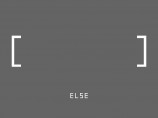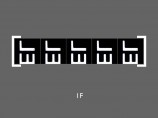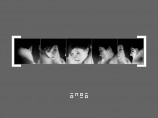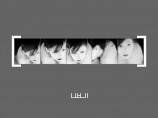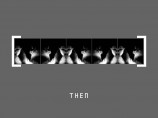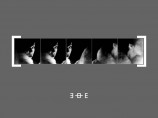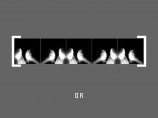NOTES ON FILM 01 ELSE
Film, 2002
Sound: Wolfgang Frisch
Kamera/Camera: Martin Putz
Actress: Eva Jantschitsch
Realisierung/Realisation:
Norbert Pfaffenbichler
Verleih/Distributor: sixpackfilm
de
Eine Darstellerin im 20er Jahre Look wurde gleichzeitig von drei Perspektiven aus gefilmt, wobei sich eine der Kameras hinter einem transluzentem Spiegel befand, die zwei weiteren seitlich links und rechts hinter der Akteurin. Als Vorlage diente die Verfilmung der Schnitzler-Novelle “Fräulein Else” aus dem Jahre 1928. Gedreht wurde sowohl auf Digital-Video und Super-8 als auch auf 16mm und 35mm Filmmaterial. Diese Aufnahmen wurden in der digitalen Postproduktion mittels Splitscreenverfahren als visueller mehrstimmiger Kanon montiert. Durch dieses super-voyeurisitsche Verfahren des multiplizierten Blicks ist das Gesicht der Darstellerin jeweils fünf mal parallel in unterschiedlichen Ansichten auf der Leinwand zu sehen. Jede der insgesamt sieben Variationen folgt einem eigenen logischen Regelsystem. Am unteren Bildrand läuft eine typografische Animation ab.Die Grundeinheit des Spielfilms nimmt Norbert Pfaffenbichlers notes on film 01 else, und macht sie zu einem Element in einer Mengenlehre, in der die Schauspielerin wie ein humaner Rest in einem Bild fungiert, das nicht mehr metaphorisierbar ist, und damit auch seine Zeitlichkeit einbüßt.
(Bert Rebhandl)
notes onfilm 01 else fällt aus der Zeit, dem frühen Kino ebenso so sehr verpflichtet wie dem nachmodernen: eine Fläche der Projektionen, schwarzweiß und in Klammern gesetzt, als Nebenbei, als schnelle Notiz zur schmerzlichen Schönheit des Zeit und Raum bewahrenden Bewegungsbildes.
(Stefan Grissemann)
en
A face in five different panels, black and white and placed in brackets. notes on film 01 else is a report on cinema’s narcotics: visualization and motion, material and editing, and the riddle posed by a face. Understood as the German woman´s name, „else“ could refer to the young actress gazing from the five fields of the split screen, simultaneously object and subject of our voyeuristic desire. It seems as if a screen test were being made; the arranged images from an audition, shot from several different angles and arranged „cubistically.“ The woman moves, turns, poses and plays with the camera, demonstrating refusal and surrender, with hesitant invitation and sudden retreat. The orchestral music reveals itself to be synthetic, a series of quotations which resemble both epically surging kitsch and modernistic fragility.Everything is in motion, the images, the sound and the text. A transformation is taking place: The word „if“ begins to disintegrate slowly, to shift and split, and then reform as terms such as „then,“ „or“ and „else.“ A journey into the world of implications, to the subjunctive mood of cinematographic narration, to the Other, foreignness of the filmic, to the present, to the sheer presence of its actors.
At its very beginning this film celebrates, as if in fast forward, the material nature of cinema, quoting avant-garde history, Neue Sachlichkeit and Duchamp’s “Anémic Cinema,” though without becoming nostalgic. notes on film 01 else is in a sense timeless, being equally indebted to early cinema and the postmodern: a screen for projections, black and white and set between brackets, as an incidental remark, a quick note on the bittersweet beauty of the moving image, which preserves time and space.
(Stefan Grissemann, translation by Steve Wilder)
